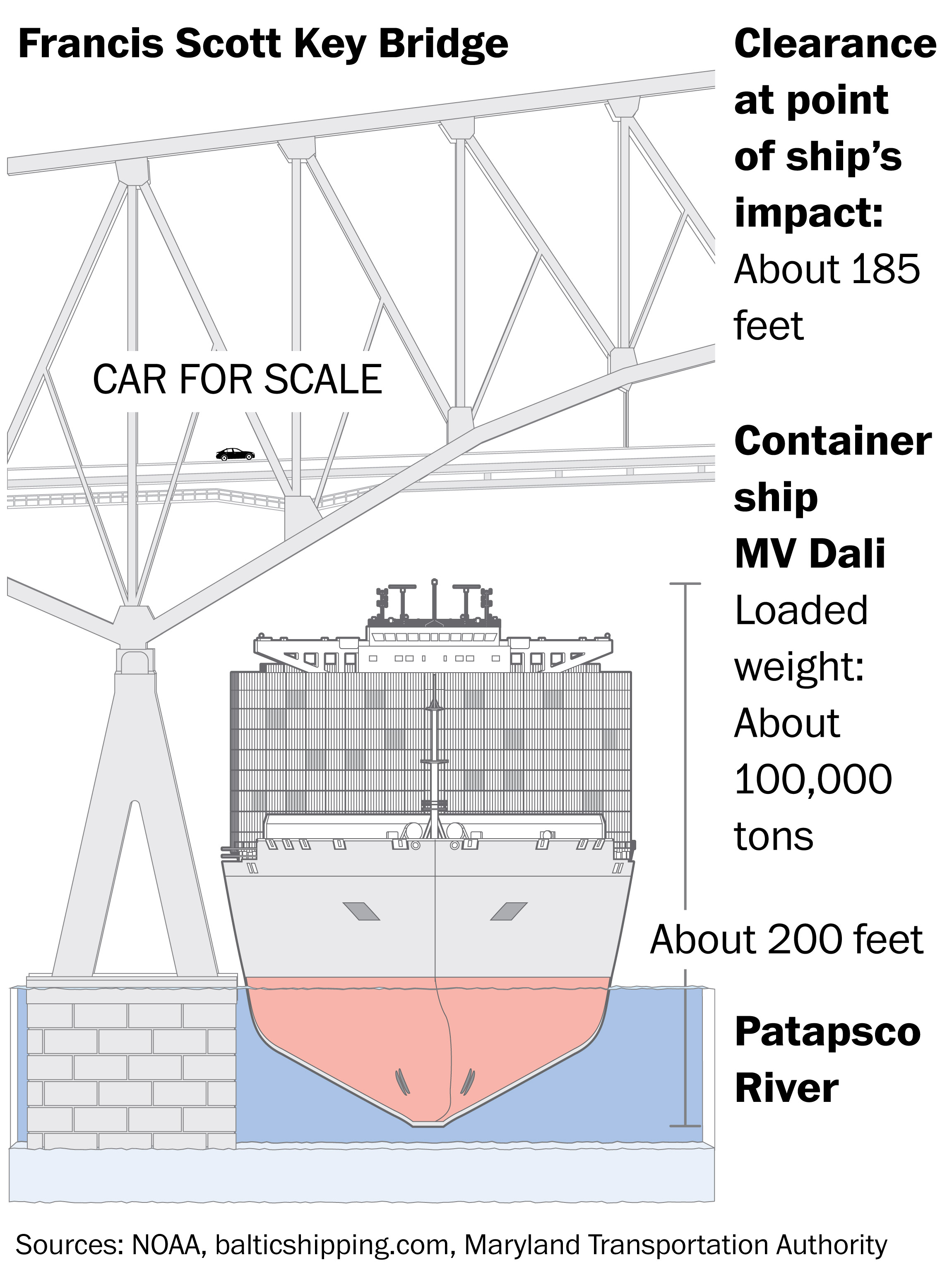Key bridge in Baltimore collapses after cargo ship crashes into it
Anonymous
You should totally have been leading that cargo ship, you totally could have saved everyone a lot of trouble. Go you. |
Anonymous
The government is the best at maintenance and safety. See the Space Shuttles for examples of the government's fine work. |
Anonymous
Thanks you for this laugh on an unlaughable subject. |
Anonymous
Have you ever lost power steering in your 2-ton car? You know how you have to strain a bit to turn the wheel? OK, now imagine losing power steering in a 100,000 ton ship that doesn't have wheels, but slower-to-react rudder. |
Anonymous
| I hope that this thread is chock full of trolling and that people are not actually so stupid. |
Anonymous
NP. I have never been on a container ship nor have I ever seen one in real life up close. I do live on the Bay so I see them go by from miles away every once in awhile, but I probably know the most about how they work from watching the second season of The Wire. However, given that I am vaguely aware of their massive size, and because I took physics in high school 30 years ago, I feel like I could piece together some logic regarding the length of time it would take to drop an anchor off a ship that tall and going that fast. So basically, by using some common sense plus some vague knowledge of the topic, I feel like I could surmise that it would taken quite a bit of time to drop an anchor in a way that would actually stop or slow such a massive ship. Perhaps this is PP's thought - that people seem to be lacking some basic common sense when it comes to issues like this. But maybe my "common sense" is more rooted in actual knowledge to which most people are not privy, in which case I'm just being an elitist, which is possible. |
Anonymous

|
Anonymous
Anonymous
The bottom of that channel is mud or silt. There's nothing an anchor will catch and suddenly stop the ship. It will drag the ship to an eventual stop. Brakes don't bring your car to sudden halt either. https://www.nab.usace.army.mil/Media/News-Stories/Article/3385060/usace-awards-contract-to-dredge-baltimore-harbor-and-channels/ |
Anonymous
Anonymous
Put it in reverse terry |
Anonymous
Contractor Morton Thiokol was ultimately found at fault for the Challenger explosion. Suggest you watch a documentary. |
Anonymous
What about the reports that it had been experiencing power issues for some time? |
Anonymous
No, that won't work too well. You'd end up with a bigger mess of tangled steel. They will send in teams of underwater salvage divers to cut and lift pieces that will then be lifted from the surface of the water to a barge. It will be a very difficult job . Divers will be limited to 80 minutes without needing to go through decompression on the way up. Obviously more time since they are all decompression certified. They may be able to rig some sort of a saturation dive platform that will allow the divers to work without decompression for up to a month. And remember, the guys who will be working down there will have terrible visibility and that will compound the problems. Don't hold your breath. It will be a long time to clean this out. |
Anonymous
Why decompression? The amount of time under? It’s only 50 feet deep. My knowledge of scuba diving is limited. |
